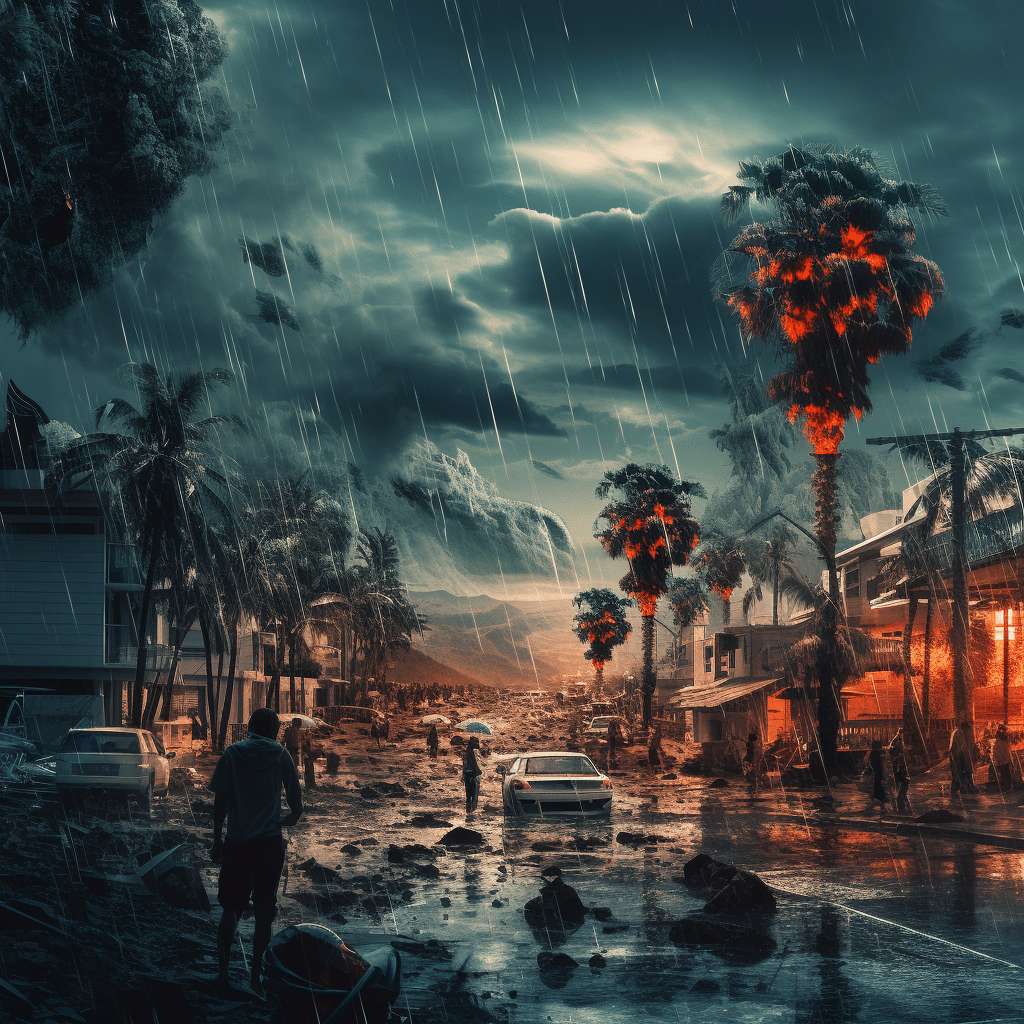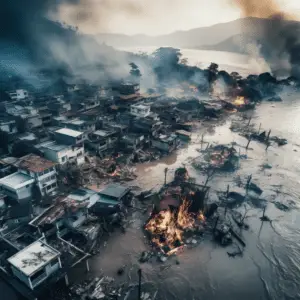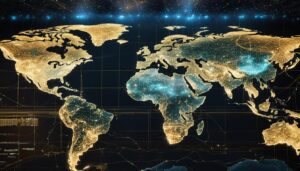
Can AI Predict and Prevent Natural Disasters?

AI Predict Natural Disasters, Natural disasters have been a constant threat to humanity throughout history. They cause immense damage to lives, infrastructure, and the environment. With the advancement of technology, particularly in the field of Artificial Intelligence (AI), the question arises: Can AI predict and prevent natural disasters?
Predicting Natural Disasters with AI
AI Predict Natural Disasters, AI has brought significant advancements in early warning systems that can help predict natural disasters. Machine learning algorithms, capable of processing and analyzing vast amounts of data, have shown promising results in forecasting earthquakes, hurricanes, floods, and wildfires.
By analyzing historical data patterns, AI algorithms can identify potential correlations, trends, and indicators that precede natural disasters. These algorithms can then predict with enhanced accuracy the occurrence of future disasters, giving communities and authorities valuable time to prepare and mitigate the impact.
How AI Helps Prevent Natural Disasters
While AI may not directly prevent natural disasters from happening, it has diverse applications in reducing their impact and saving lives. Here are a few ways AI is actively contributing towards disaster prevention:
-
- Improved Weather Forecasting: AI algorithms can process vast amounts of meteorological data, enabling more accurate weather predictions. This information is crucial for early warnings and better evacuation procedures.
-
- Early Warning Systems: Through data analysis, AI can identify patterns and provide real-time alerts based on environmental indicators, such as changes in pressure, temperature, or water levels. These timely warnings allow people to take necessary precautions.
-
- Remote Sensing and Monitoring: AI-powered drones or satellites can provide real-time data on disaster-prone areas, such as detecting areas susceptible to landslides or identifying changes in volcanic activity. This helps in effective disaster management and resource allocation.
-
- Smart Infrastructure: AI can also assist in designing and constructing resilient infrastructure that can withstand natural disasters. By analyzing historical data and simulations, AI algorithms can optimize building techniques and material selection.
The Limitations and Challenges
While AI has shown promising results in predicting and preventing natural disasters, it also faces numerous challenges. The primary limitations include the unpredictability and complexity of natural phenomena, data availability, and technological infrastructure in vulnerable regions. Additionally, false alarms and the potential for over-reliance on AI systems can also pose risks.
The Future of AI in Natural Disaster Management
AI is continuously evolving and holds great potential in revolutionizing natural disaster management. By combining AI with other emerging technologies like IoT (Internet of Things) and big data analytics, more accurate predictions and proactive measures can be taken to minimize the impact of disasters.
However, it is crucial to remember that no technology can completely eliminate the occurrence of natural disasters. While AI can enhance our preparedness and response, it should be seen as a powerful tool that works in synergy with human intelligence and decision-making.
In conclusion, AI is becoming a valuable asset in predicting and preventing natural disasters. Its ability to analyze vast amounts of data and identify patterns provides early warnings and helps in better disaster management. While challenges remain, AI’s potential to save lives and reduce damage cannot be underestimated.
How can utilizing AI technology enhance early warning systems for natural disasters
AI technology can enhance early warning systems for natural disasters in several ways:
1. Improved data analysis:
AI algorithms can analyze vast amounts of data collected from various sources, including weather sensors, satellites, social media, and historical records. This allows for real-time monitoring and more accurate predictions of natural disasters, such as hurricanes, earthquakes, floods, or wildfires.
2. Early detection:
AI can detect subtle patterns and anomalies in data that might go unnoticed by human observers. For example, AI algorithms can detect slight changes in atmospheric pressure or ground movement, which may indicate an impending earthquake, allowing authorities to issue warnings and evacuate people in advance.
3. Faster response time:
AI can significantly reduce the time it takes to process and interpret data. By automating the analysis and decision-making processes, AI systems can rapidly assess the severity and trajectory of a natural disaster, enabling faster responses and timely deployment of resources, such as emergency services or relief efforts.
4. Integration of multiple data sources:
AI can integrate data from diverse sources, including satellite imagery, social media posts, and citizen reports, to create a comprehensive picture of a natural disaster situation. This collective intelligence can provide a more holistic understanding of the event, leading to more accurate warnings and targeted response efforts.
5. Enhanced modeling and simulation:
AI can improve the accuracy and reliability of predictive models and simulations used in early warning systems. By training AI algorithms on historical data and continuously updating the models with new information, the accuracy of predictions can be continually improved, leading to more reliable early warnings.
6. Personalized alerts and notifications:
AI can tailor early warning messages to individuals based on their location, preferences, and specific risk factors. This allows for more targeted and effective alerts, ensuring that people receive relevant information and instructions to protect themselves during natural disasters.
Overall, AI technology can enhance early warning systems by providing more accurate predictions, faster response times, better data integration, and personalized alerts. This can ultimately help save lives and minimize the impacts of natural disasters.
How can AI contribute to predicting and preventing natural disasters?
AI can contribute to predicting and preventing natural disasters in several ways:
1. Data analysis:
AI can analyze vast amounts of historical data from various sources, such as weather patterns, geological data, and satellite imagery, to identify patterns and make accurate predictions about the likelihood and intensity of natural disasters.
2. Early warning systems:
AI can help develop early warning systems that can detect the initial signs of natural disasters, such as earthquakes, hurricanes, or floods, and issue timely alerts to the at-risk population, giving them more time to evacuate or prepare.
3. Risk assessment and modeling:
AI can help in assessing and predicting the vulnerability and risk associated with different areas and infrastructure. It can analyze various factors like terrain, population density, land use, and climate data to provide insights into potential disaster-prone areas and inform urban planning and risk mitigation strategies.
4. Improved forecasting:
AI techniques, like machine learning, can help improve weather forecasting models by analyzing complex weather data in real-time. This can lead to more accurate predictions of severe weather events, such as tornadoes, cyclones, or storms, allowing authorities to take prompt actions to mitigate potential damage.
5. Monitoring and early detection:
AI-powered sensors and drones can monitor environmental conditions, such as water levels, seismic activity, or atmospheric changes, in vulnerable areas. These devices can rapidly collect data and transmit it to AI systems that can analyze the information and identify any signs of imminent disasters.
6. Resource allocation and response planning:
AI algorithms can optimize resource allocation during a disaster response, considering variables such as population density, infrastructure, and available resources. This can help authorities prioritize their efforts and allocate resources more efficiently.
7. Simulation and scenario planning:
AI can run simulations and scenario planning to understand the potential impact of natural disasters and help develop strategies to mitigate the damage. These simulations can analyze various factors like evacuation routes, emergency response plans, and infrastructure resilience to identify areas of improvement.
By harnessing the power of AI in predicting and preventing natural disasters, we can potentially save lives, reduce property damage, and better prepare communities for potential threats.
What are some examples of successful AI applications in preventing natural disasters?

1. Early Warning Systems:
AI models have been applied to predict and detect natural disasters like hurricanes, earthquakes, and floods in advance. These systems gather data from various sources like satellite images, weather stations, seismic sensors, and social media to generate real-time predictive models. For example, NASA uses AI to monitor drought conditions and predict wildfires.
2. Flood Prediction and Management:
AI algorithms can analyze weather patterns, river flow rates, and terrain data to forecast floods and generate flood risk maps. This information helps in disaster preparedness, evacuation planning, and resource allocation during floods. For instance, the Danish Emergency Management Agency uses AI to predict river flooding and monitor water levels.
3. Earthquake Early Warning:
AI-based algorithms can analyze seismic data from a network of sensors to rapidly assess the intensity and location of earthquakes. This enables the delivery of advance warnings, giving people valuable seconds to seek shelter and take necessary precautions. Mexico’s earthquake early warning system incorporates AI to analyze seismic data and alert residents in affected areas.
4. Tsunami Detection and Alert Systems:
AI-powered algorithms can process real-time data from buoys, seafloor sensors, and tidal gauges to detect tsunamis. These systems analyze wave patterns and characteristics to differentiate them from regular ocean activity. Once a potential tsunami is detected, alerts can be sent to coastal communities, saving lives. The Deep-ocean Assessment and Reporting of Tsunamis (DART) system utilizes AI for tsunami detection.
5. Forest Fire Monitoring and Prediction:
AI models are used to analyze satellite imagery, weather data, and historical records to predict and detect forest fires. These models help in early detection and enable quick response efforts to mitigate the impact of wildfires. The California Department of Forestry and Fire Protection (CalFire) employs AI for wildfire prediction and prevention.
6. Landslide Monitoring:
AI-based systems use remote sensing techniques to monitor slope movements and detect potential landslides. By analyzing satellite imagery and ground data, these systems can issue warnings and help in better land management practices. The Hong Kong Geological Survey utilizes AI for landslide monitoring and prediction.
These are just a few examples of successful AI applications in preventing natural disasters. AI continues to evolve and has the potential to revolutionize disaster management by providing more accurate predictions, faster response times, and better resource allocation.









Thanks for sharing. I read many of your blog posts, cool, your blog is very good.